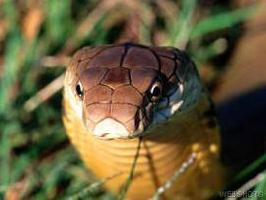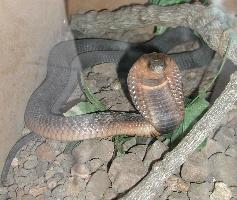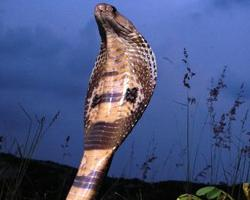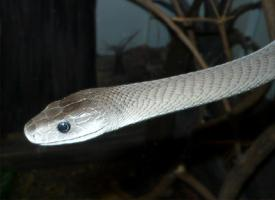
Váhy a míry
| Délka | 5,7 m |
|---|
Popis zvířete
The King Cobra (Ophiophagus hannah), a name that resonates with an air of regality and power, is an iconic species that belongs to the family Elapidae. This remarkable serpent is not only the world’s longest venomous snake but also a creature of great fascination and awe. With an average length of about 3 to 4 meters (9.8 to 13.1 feet), some individuals can grow up to 5.85 meters (19.2 feet), making them the giants of the venomous snake world.Distinguished by its imposing size, the King Cobra possesses a sleek and muscular body, covered in smooth scales. The coloration of this majestic serpent varies widely across its range, displaying hues from black, brown, green, to olive, often with pale yellow or white crossbars or chevron patterns. The head of a King Cobra is elongated and somewhat flattened, with a pair of piercing eyes that give it a stern appearance. A distinctive feature is the hood, which it can expand by spreading the ribs behind its head when threatened, displaying a pair of false eyes on the posterior part of the hood to deter potential predators.
Native to the forests of South and Southeast Asia, the King Cobra's habitat spans India, China, Indonesia, the Philippines, and beyond. This species thrives in dense highland forests, bamboo thickets, mangrove swamps, and other areas close to water bodies. The King Cobra is a highly adaptable species, capable of climbing trees and swimming in water with ease, reflecting its versatile predatory nature.
As an apex predator, the King Cobra's diet is primarily composed of other snakes, both venomous and non-venomous. It has a particular fondness for members of the genus Naja (true cobras), but it also preys on pythons, kraits, and even its own kind on rare occasions. This snake employs a "bite and hold" technique to deliver a potent neurotoxic venom that quickly immobilizes its prey, after which it swallows the victim whole.
The King Cobra is also notable for its sophisticated breeding behaviors. It is the only snake known to build nests for its eggs, which the female constructs using vegetation. She exhibits maternal care by guarding the nest vigorously until the eggs hatch, a rare behavior among snakes. The hatchlings are highly venomous from birth and are equipped to fend for themselves.
Despite its fearsome reputation, the King Cobra plays a crucial ecological role by controlling the populations of other snakes, thereby maintaining the balance within its ecosystem. However, this magnificent species faces threats from habitat destruction, poaching for the traditional medicine trade, and fear-driven killings by humans. Classified as Vulnerable by the International Union for Conservation of Nature (IUCN), the King Cobra's survival depends on continued conservation efforts and habitat protection.
The King Cobra, with its majestic presence and ecological significance, remains one of the most revered and respected wildlife species in its native range. Its existence underscores the importance of biodiversity and the need for concerted efforts to preserve the natural world.
Podobná zvířata
Nové fotografie zvířat
Top 10 zvířat
- Chinese water dragon (Physignathus cocincinus)
- Galápagos tortoise (Geochelone nigra complex)
- Dolphin gull (Leucophaeus scoresbii)
- Japanese macaque (Macaca fuscata)
- Colombian red howler (Alouatta seniculus)
- Sea urchins (Echinoidea)
- Diana monkey (Cercopithecus diana)
- Moustached guenon (Cercopithecus cephus)
- Common reed warbler (Acrocephalus scirpaceus)
- Common house mosquito (Culex pipiens)


